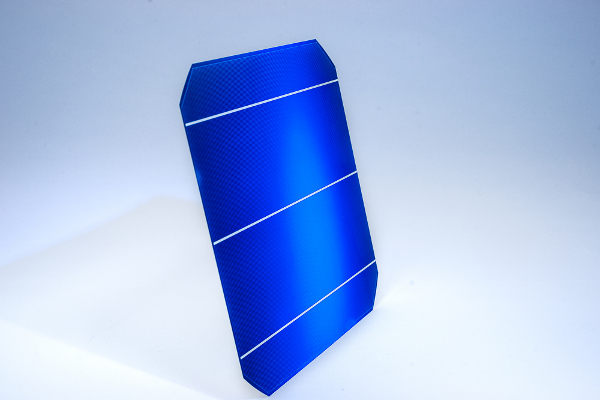Imec, the Belgium-headquartered nanoelectronics research center, has been able to demonstrate the long-term reliability of copper-printed solar PV cells in an industrial setting, a new paper has confirmed.
Working alongside BE Semiconductor industries (Besi) – a manufacturer of assembly equipment for the semiconductor industry – Imec produced 60-cell nickel/copper/silver (Ni/Cu/Ag) plated, front side laser ablated solar modules at a Meco Direct Plating Line in the Netherlands.
Once on the plating line, the five modules plated with 60 p-type Cz-Si (mono silicon) cells were annealed in an inline belt furnace, and interconnected using the industry standard soldering and lamination process. Two of the five modules tested were subjected to 600 thermal cycles ranging from -40c to +85c to test for overall power losses.
According to Imec’s testing, both modules passed these IEC61215 specification tests three times, recording power losses of just 1.5% and 1.8%. Another module endured a 1,000h damp heat test consisting of 85c temperatures and 85% relative humidity (RH), showing no power losses and a 0.1% gain.
The remaining two modules were subjected to a serial testing of 15 kWh UV-conditioning, followed by 50 cycles of temperature testing and 10 cycles of humidity-freeze testing. Both displayed admirable durability, registering overall power losses of just 0.5% and 3% respectively.
Imec and Besi concluded from these tests that the long-term reliability potential of Cu-plated cells and modules is viable, given that they outperformed the industrial standard of less than 5% loss relative to initial power.
Richard Russel, Imec’s principal engineer, said that he was pleased with the result. “It demonstrates our industry-leading knowledge on how to make reliable Ni/Cu/Ag plated solar cells and modules with a low cost industrial manufacturing process.”
Besi product manager Martijn Zwegers added that the positive results achieved can be repeated on a larger test set, and indicates that Cu-plated cells can pave the way for Ni/Cu/Ag cells as a viable, low-cost alternative to front-side screen printing of Ag pastes.
The use of silver paste in the production of solar cells has been falling for a number of years as techniques have been developed and refined to reduce the amount required of this precious – and price volatile – metal. Recent reports have suggested that silver demand from PV applications peaked in 2016 as the amount of silver required per PV module contracts, allied to the rise in copper metallization solutions.
However, although modules require less and less silver, the expected resurgence of module production volumes in 2018 could see silver demand reach a new peak, argue some analysts.
This content is protected by copyright and may not be reused. If you want to cooperate with us and would like to reuse some of our content, please contact: editors@pv-magazine.com.



The current price of copper is $5.60 per kilo, of silver $520 per kilo. Both prices fluctuate, but clearly the difference is two orders of magnitude. The potential savings are large.